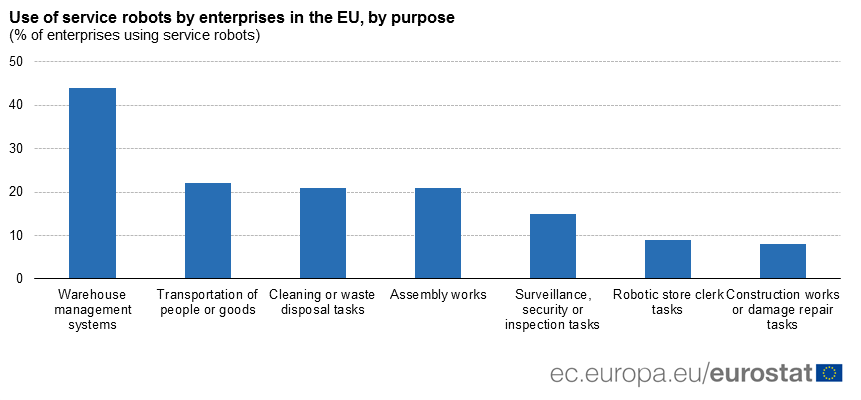In 2018, 7% of EU enterprises employing at least 10 persons used industrial or service robots.
Large enterprises use robots much more (25% of enterprises employing 250 persons or more) than medium enterprises (12% of enterprises employing 50 to 249 persons) or small enterprises (5% of enterprises employing 10 to 49 persons).
The largest shares of enterprises using industrial or service robots were recorded in Spain (11%), Denmark and Finland (both 10%), and Italy (9%). The lowest shares were noted in Cyprus (1%), Estonia, Greece, Lithuania, Hungary and Romania (all 3%).
Enterprises more commonly use industrial robots (5%) than service robots (2%). Industrial robots are most frequently used in the manufacturing sector (16%), and service robots in manufacturing and in retail trade (both 4%).
Enterprises use service robots mainly for warehouse management systems (44% of enterprises that used service robots), followed by transportation of people or goods (22%), cleaning or waste disposal tasks, as well as assembly works (21% each).
The source dataset is available here.
Robots consist of several components, such as a mechanical structure, sensors, a computer and a control unit. According to their intended application, they can be classified into industrial and service robots. While industrial robots are mainly used in industrial automation and perform their tasks in clearly structured environments with external safeguards, service robots have a certain level of autonomy and the ability to operate in complex environments that may require interaction with persons, objects or other devices.
To contact us: estat-user-support@ec.europa.eu.


